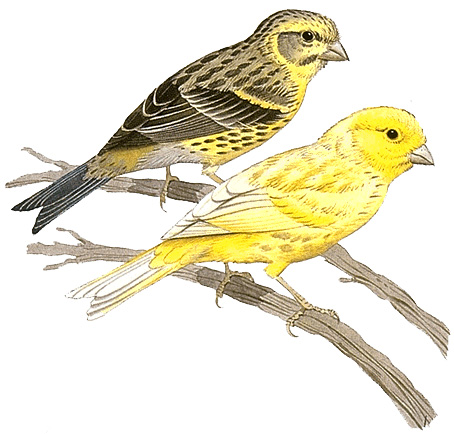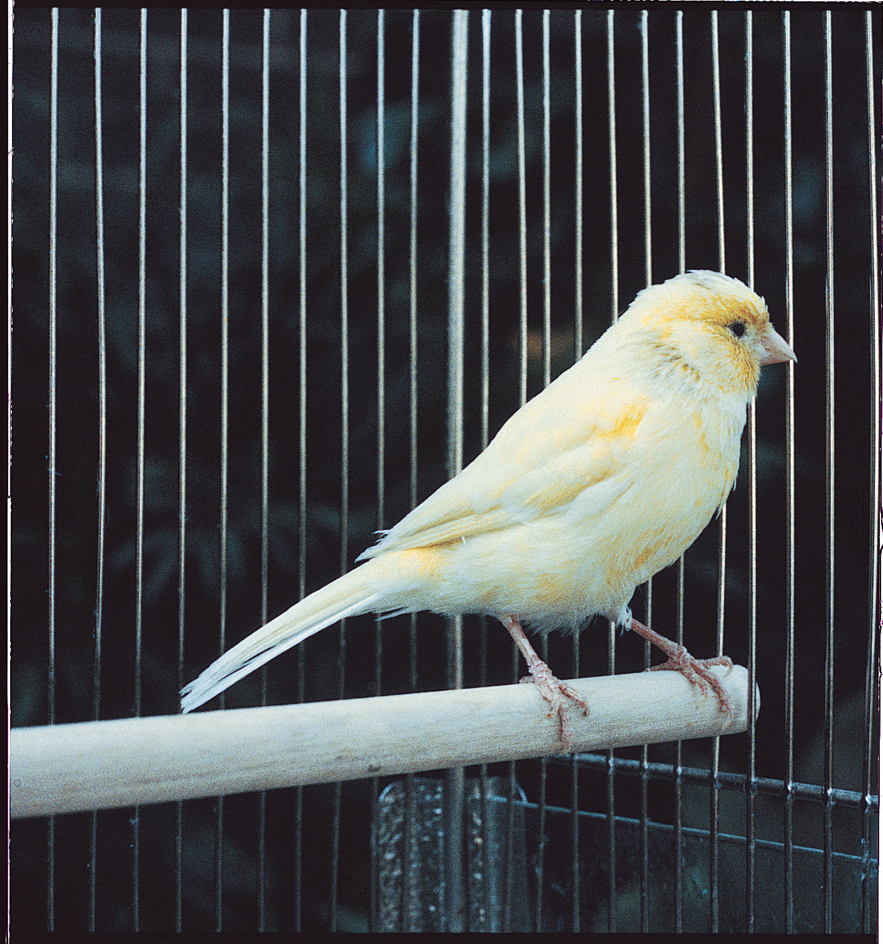Canary is one of the most popular bird pets. People keep canaries for their beautiful songs, and because they make cheerful companions. Canaries belong to the finch family. They are named for the Canary Islands, where they are still found in the wild. The songs of wild canaries are not nearly so melodious as those of the tamed birds that are bred for the quality of their song. Wild canaries are dark green and olive-colored, and are seldom over 8 inches (20 centimeters) long. Wild canaries live in pairs, but often flock together like their distant relatives, the American goldfinches. Canaries build nests of dry moss and grass in branches about 10 feet (3 meters) from the ground. A canary lays four or five eggs.

Most tame canaries are bright yellow, but some are pale yellow. If fed red peppers, canaries may be bright orange.
During the late 1400’s, canaries were brought to Spain from the Canary Islands. English, French, Scottish, and Belgian canary breeders have developed many varieties with strange appearances. Some tame canaries bred in Lancashire, England, grow 8 inches (20 centimeters) long. Scottish canaries are long, thin birds with tails that curl between their legs. Belgian canaries have such long necks that their heads droop. French canaries have curly patterns of feathers all over their bodies.
Loading the player...Domestic canary
The best singing canaries, such as the St. Andreasburg variety, are bred in the Harz Mountains of Germany. Different kinds of singing canaries are named for the qualities of their songs. Rollers, for example, have a rolling, gurgling song.
Canaries should be kept in clean cages that are large enough to let the birds fly for exercise. Although canaries eat canary seed, they also need green food. In addition, canaries should be given water for drinking and bathing.

Because canaries are more sensitive to poisonous gases than human beings, canaries have been used to detect such gases on battlefields and in coal mines. Each year, canaries selectively replace some of their songs with different songs. As a result, canaries have become important laboratory subjects for studies of selective forgetting and learning.
In North America, the name wild canary is often given to the American goldfinch and the yellow warbler, both of which look much like the tame canary. See also Goldfinch.
